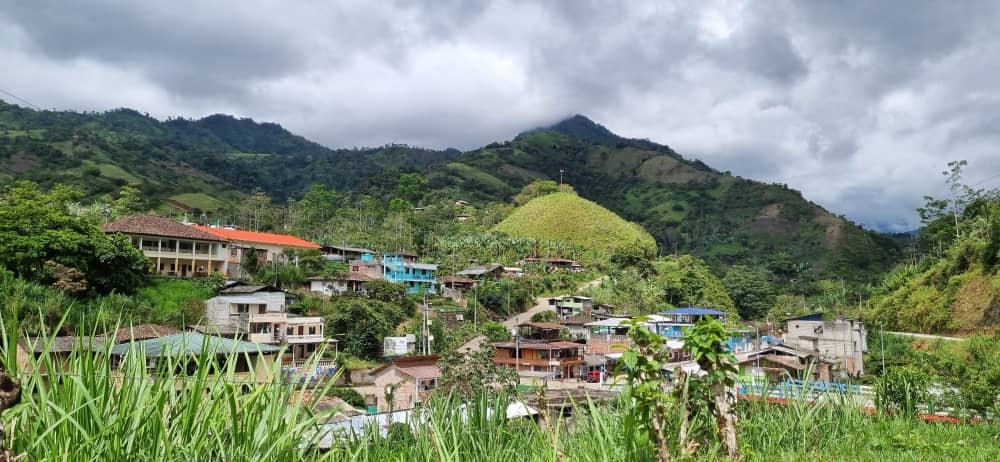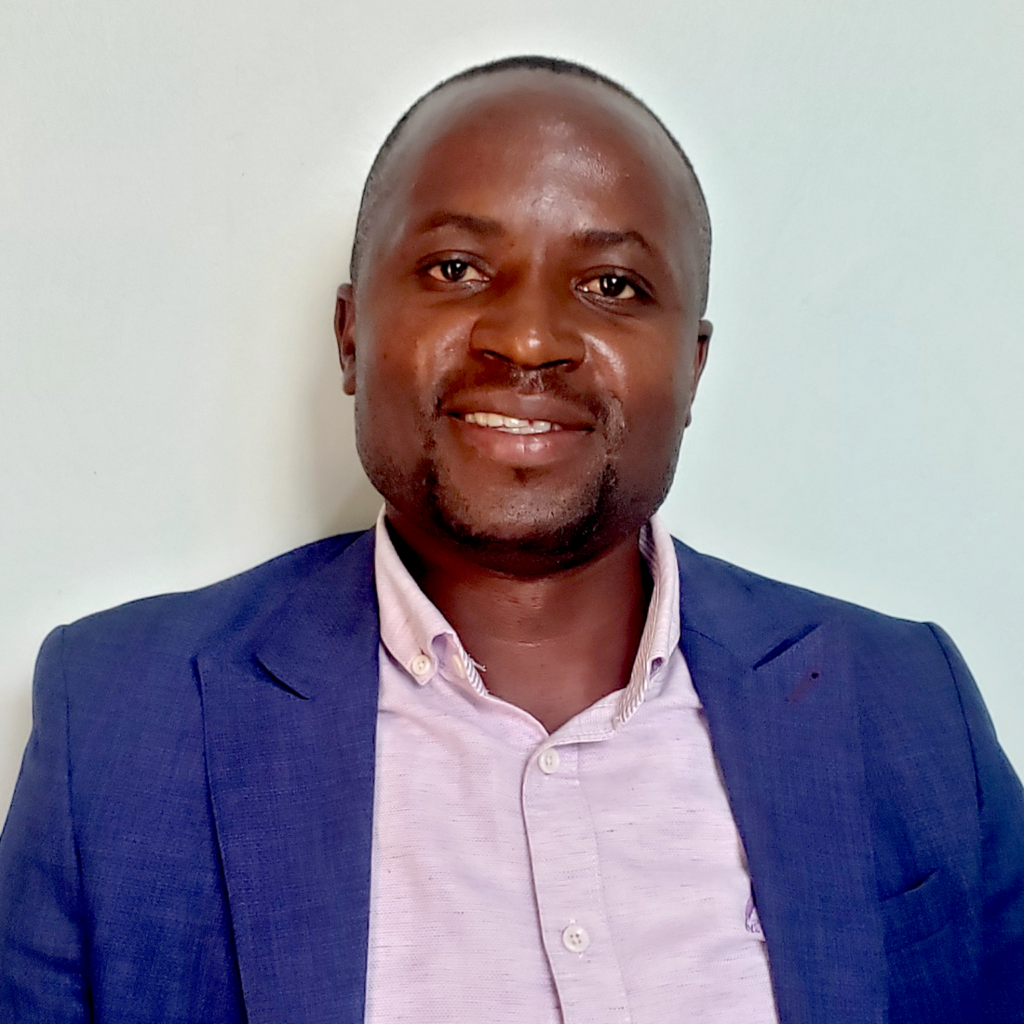By: Osbert Atiwjukye, Africa Program Director, Green Empowerment
As Green Empowerment’s Africa Program Director, this November, I had the great pleasure of traveling to Ecuador to learn more about Green Empowerment’s model of community-managed water systems and to share my experience from the water and sanitation sector here in Uganda.
The Context
From the first community visit to the last, it was clear that Ecuador has an abundance of lush hills and mountain streams. In other words, through my professional eyes, I saw good terrain for gravity-fed water systems and a wealth of potential water sources. Even so, hauling water and ensuring that it is safe to drink are still common challenges in Ecuador, especially in remote areas. Which is why many Indigenous and Afro-Ecuadorian communities work with Green Empowerment and partners to establish community-wide water systems that include slow sand filtration, chlorination, and piped household delivery.

People who have not visited sub-Saharan Africa often assume that it is all dry savannah – not so! In Western and Eastern Uganda we have a number of hilly districts with similar surface water resources that could be improved for community water supply with a similar approach to what I saw in Ecuador. We also have many established boreholes (deep wells equipped with hand pumps that provide water to an entire village or cluster of villages), which could be converted into similar piped water systems.
Three key elements from Green Empowerment’s Ecuador projects that I can see real benefit in implementing with rural communities in Uganda are: household access, metered connections, and community contributions.
Household Connections
Unlike in Uganda, where public tap stands (public faucets where anyone in town can bring their containers to fill with water) are popular, in Ecuador, Green Empowerment’s systems supply household connections. Recently, the Ugandan government has called for a shift from boreholes to piped water systems. If we are going to invest in piped water systems in Uganda, let’s design so that the final connection is possible and clean water can arrive directly to people’s homes, rather than just a more convenient tap stand.
It doesn’t make sense to stop at installing tap stands, where families (mostly women and children) will still have to stand in long lines to fill containers, and then carry those containers home, sometimes still at greatly varying distances. Household connections also accelerate improved sanitation, giving families the option to install bathrooms with running water. And, they cut down on the risk of contamination through reducing home water storage.

I know that household water access is an ambitious goal – but I also believe it is attainable. This year we have had the privilege to collaborate with The Water Trust on a piped water system in Masindi district here in Uganda. When the cost estimate for household delivery came back over budget, we were forced to scale back. But we did so with the final goal of household delivery in mind. When phase one was complete, the system was equipped with a solar water pump, a large reservoir, over 3 miles of water lines and functioning public tap stands. Crucially this was not the end of the project. This foundational infrastructure was designed to be able to accommodate future expansions, and villages are already beginning to add additional water lines to the system – including some household connections.
Meters on all Connections
In Ecuador, the systems I visited were entirely managed by motivated community members through elected water committees. Most committees charge around 3 USD per 10m3 of water, and an extra fee for water consumed beyond this baseline. Committees use this income for the long-term maintenance and operation of the system. This fee structure is possible because each household connection is equipped with a meter, providing a transparent way to understand the volume of water consumed and to establish a fair fee structure for water usage.
Water meters are nothing new to Uganda, the learning for me here was to see how essential meters are when installing household connections – many systems built by other actors in Ecuador lacked metering, and consequently struggled to provide sustainable service. As we push for more household delivery, meters are a crucial component that we need to continue to prioritize.

Community Contributions
I was impressed to learn that Ecuadorian community members themselves build the systems. They donate their labor during community work days referred to locally as mingas. Mingas take place at least three days a week during construction and are led by members of the newly-formed water committees, who are in turn guided by technical staff from Green Empowerment’s local partner. Digging trenches, laying pipework, building sand filters – all this and more is done by community members themselves, greatly reducing the per capita cost of building a system. Communities can contribute up to 50% of the total project cost through this volunteer labor in addition to contributing financially anywhere from 5% to 90% of the materials costs.
This type of communal work is called ‘Bulungi bwansi’ in Luganda, and ‘Omuhiigo’ in Runyakitara, but it is no longer practiced consistently in many parts of Uganda. Communal work used to be common across Africa but has more recently been replaced by cash-for-work programs, which have strong advantages as well. When community members are paid for their work, the project adds an economic empowerment component, which is especially important in the poorest most disadvantaged regions.
For me, the right solution here depends very much on the context. In regions where outside funding sources are scarce, community contributions (both in labor and resources) could greatly reduce the per capita cost of installing a system, while also enhancing communities’ sense of ownership.

Borrowing Success
In Uganda, tap stands have been dominant in rural water supply until recently where a few organizations have started piloting models to encourage household connections. As a sector, we need to embrace this move because it eliminates many management issues, encourages improved sanitation and hygiene in homes, and saves a lot of time in fetching water.
After visiting systems in Ecuador, I am convinced that Community Based Management (CBM) can function well with some essential components taken into account, including meters on all household connections, paid system technicians, and communities that actively participate in system development. In Uganda, we are in the middle of professionalizing the rural water sector with a CBM+ approach, where the government is working in collaboration with communities and service providers. While Ecuador could learn a lot from this collaboration between government, community, and NGOs (that is a topic we’ll save for another blog), we can also adopt their successes here. From household delivery to metered connections to community contributions, I am eager to apply these lessons with The Water Trust and additional partners here in Uganda. Together we can transform rural water access.
Have you had a chance to donate this holiday season? Make a donation today to support local leaders like Osbert, who are transforming water access around the world.

Osbert is a civil engineer with extensive experience in water and sanitation work in rural and urban areas. As our Africa Program Director, he leads our strategy both in Uganda and for expanding to other regions in Africa.

Well done Green Empowerment indeed it’s great work and I Support the idea to be extended in uganda Rural areas. I would like to learn from your practices .